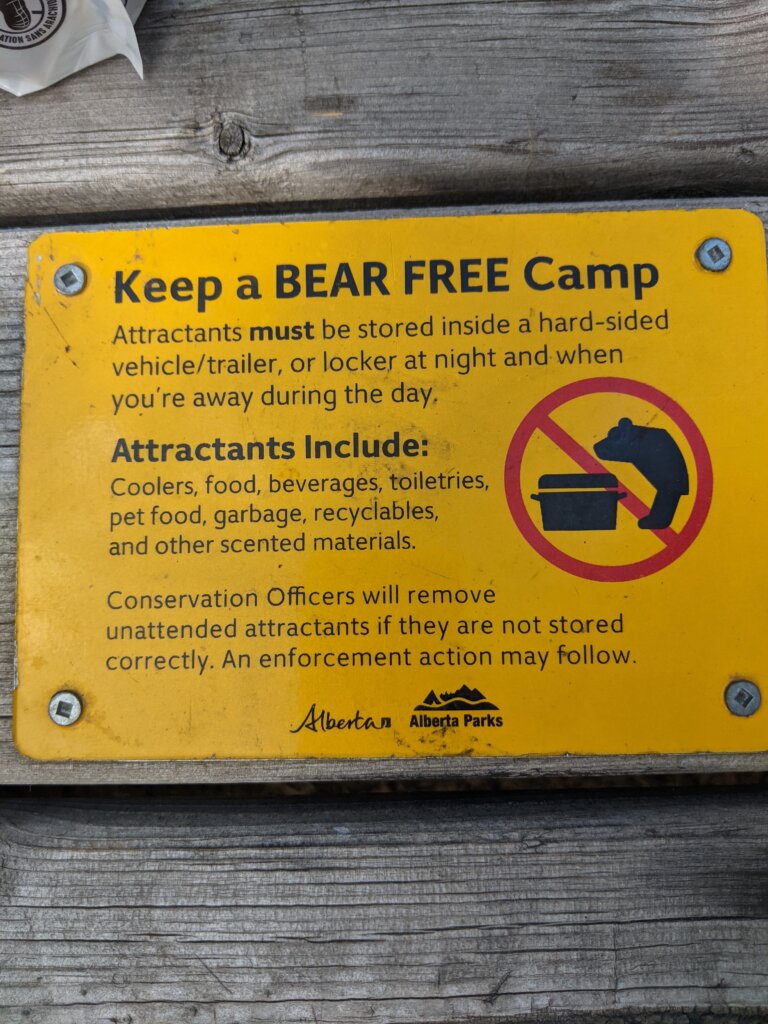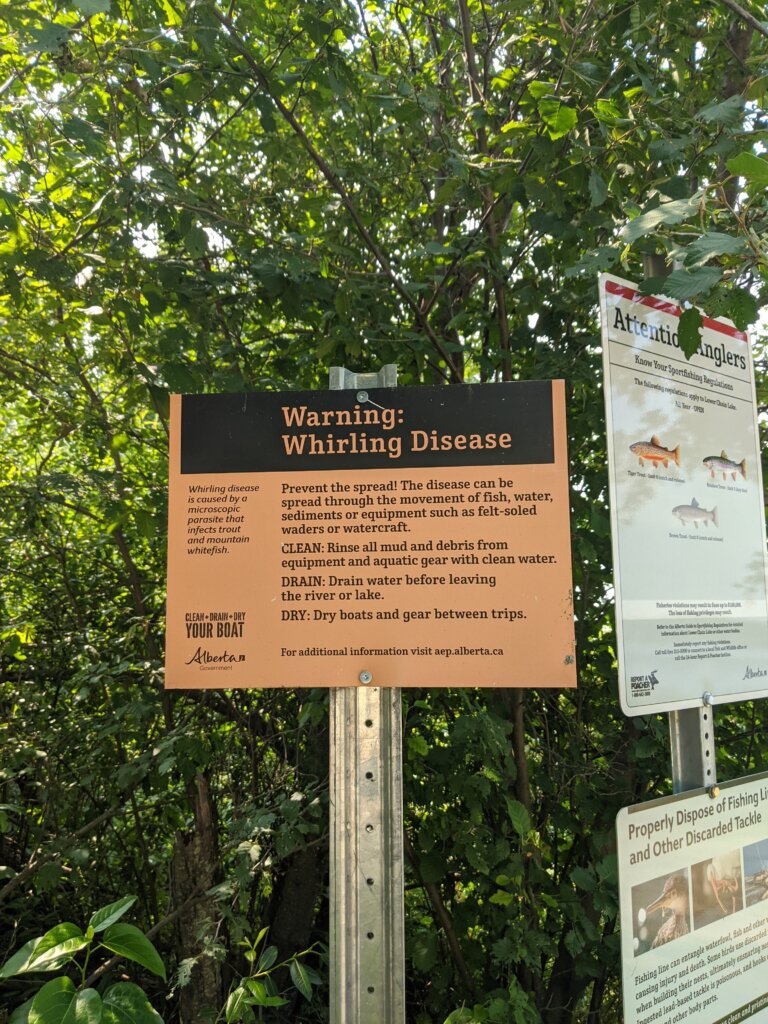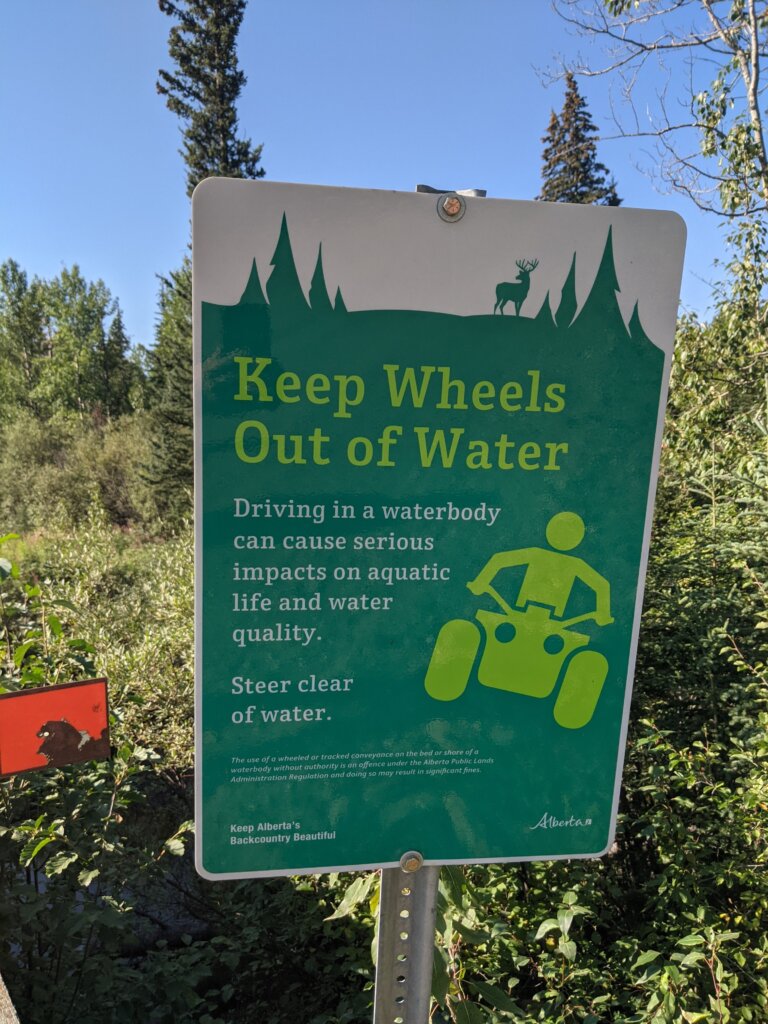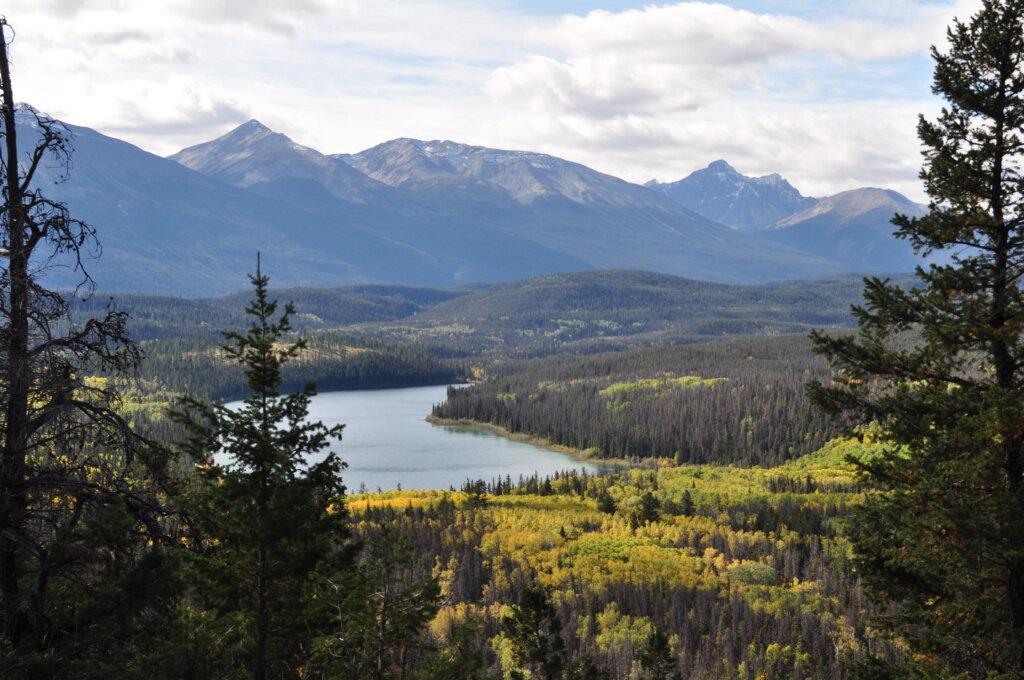Responsible Recreation in the Athabasca Watershed
AWC-WPAC | recreation and stewardship | August 2023
Kailyn Gibbons, Watershed Science Technician
What does responsible recreation mean?
The beautiful land of the Athabasca watershed is filled with many different regions and types of natural environments that can be enjoyed through a variety of activities. When taking part in these activities, we want to keep three things in mind: have fun, be safe, and be responsible. Being responsible may include prioritizing certain actions and preparations depending on what activity you are planning to enjoy, but at the center is reducing our impact on other people, species, and environments when we go outside to recreate. We want to protect all the areas we enjoy visiting and make sure we can continue to enjoy them for a long time. The following sections highlight some activities you might like doing or some activities you’d like to try and provide some tips and resources that can help inform you about being responsible.
Camping & Hiking
Alberta is home to amazing areas of nature and outdoor activities. For some, being able to camp outdoors and enjoy waking up in the fresh air with birds chirping is a highlight of their year. Others may enjoy taking hikes in the mountains or around lakes and enjoy the sights Alberta has to offer. You may even enjoy both and mix hiking and camping. Whatever it is, it’s important to make sure we are protecting the areas we enjoy.

One of the ways to do this is to practice the Leave No Trace principles (https://leavenotrace.ca/). The idea of this is to reduce the impact on nature by promising to take everything you bring with you back out when you leave, as well as not taking from the areas we visit. This includes taking all trash and food with you when you leave, utilizing restroom facilities when possible or properly disposing of waste, and not transferring in any rocks, plants, or animals into other natural areas. It can also include not disturbing a spot by moving rocks, wood, or plants and using only existing fire rings and dead wood for fires.

If you plan to create campfires, ensure there are no bans in the area by checking https://www.albertafirebans.ca/ and make sure you properly douse fires when done to avoid wildfires from forming. While camping or hiking, also be considerate of the wildlife and plant species living in the area. Help protect their habitat and food resources, while at the same time also making sure you know how to be safe in the case of encounters with local wildlife. More information on wildlife can be found at https://www.alberta.ca/living-with-wildlife.

When considering where you camp, make sure you know the regulations of where you will be staying. Some campgrounds are serviced and have spots you can pay a nightly fee to use. Some areas have camping nodes that have outhouses, fire rings and/or waste bins and don’t require a nightly fee but do require a Public Lands Camping Pass. Any random camping (car camping and backpacking) on public lands outside of campgrounds may also require a Public Lands Camping Pass. These passes are required for anyone planning on camping on public lands and can be purchased online or from some locations selling fishing/hunting licenses. A pass is needed for each person 18+ and is available as a 3-day pass for $20 per person or as a $30 per person for an annual pass. These funds are reinvested into the management, conservation, and safety activities of public land areas in the province to help continue providing recreation areas for all to appreciate. Some exceptions for persons or activities may apply and further information can be found at https://www.alberta.ca/public-lands-camping-pass.
Boating & Fishing

Fishing Alberta’s waterbodies is a well-loved recreational activity found throughout the Athabasca watershed. Taking into consideration how to fish responsibly, it is important for everyone to think about keeping the environment healthy and sustainable as well as letting others enjoy it for years to come. Before fishing, understand the regulations that may affect you and ensure you follow any guidelines on how to fish responsibly. The Alberta Guide to Fishing Regulations (https://albertaregulations.ca/fishingregs/) is published each year with specific information on regulations affecting fishing in Alberta. This includes licensing information, laws affecting sportfishing and essential information on protecting aquatic health. A large part of protecting fishing activities in Alberta is protecting aquatic species, which involves preventing invasive species and diseases from entering new waterbodies and affecting other fish.

When using waterbodies in and around the Athabasca watershed for boating and fishing, ensure you are employing Clean, Drain, Dry practices (https://www.alberta.ca/clean-drain-dry-your-gear.aspx). This involves inspecting and cleaning any watercraft and equipment after use in a waterbody to avoid transferring invasive species and diseases between waterbodies. When cleaning, remove any mud, sand and plant traces present on your gear and make sure to clean equipment away from any storm drains, waterways, and ditches. Also, in Alberta, it is illegal to transport watercraft with drain plugs still in place so ensure you remove drain plugs from watercraft and ensure you drain all water onto dry land before transporting equipment. Finally, let all gear and watercraft dry completely in between trips, as well as any sponges or cleaning tools used.

Motorized vehicles

In Alberta, it is illegal to operate off-highway vehicles (OHVs) on the shoreline or bed of waterbodies and wetlands. Driving on undesignated trails can cause loss of vegetation, soil compaction and erosion, all of which can be harmful to the ecosystem and species living in it. To avoid any damage to the area and leave it healthy and clean for all, it’s best to only use trails that allow the use of OHVs. The Government of Alberta provides resources for understanding designated trail areas and maps of recreational trails as part of the Wheels Out of Water initiative. These can be found at https://www.alberta.ca/public-land-recreation-maps.aspx.

In certain conditions, OHVs can carry a risk of causing wildfires due to debris and high-temperature parts such as exhausts. So, before going out on any OHV, check for any restrictions that may be in place in your area. You can check the Alberta Parks website, at https://www.albertaparks.ca/albertaparksca/advisories-public-safety/ohv-restrictions/ to see any active restrictions that might be in place. Before riding, check for any debris, hot spots and malfunctioning parts that can increase the possibility of causing fires. Also, when going out, carrying firefighting equipment such as a small shovel or fire extinguisher and stopping often to clean off debris before it can heat up, will allow you to prevent fires in your local area.
Other Recreation

Other recreation activities may include things like birdwatching, swimming, skiing/snowboarding, biking, climbing, or equestrian. For any of these activities, responsible recreation will involve taking any action or preparation that allows your impact on the environment to be as minimal as possible. This should include staying on designated trails, not leaving trash or food in the areas, understanding all regulations for your chosen activity, and limiting contact with wildlife. Reducing the footprint caused by these activities should also include avoiding trampling or disturbing vegetation and helping to inform others who might be enjoying the same activities as you.
If you have any questions or concerns about how to approach conservation and your recreational activity, consider looking up local stewardship groups, organizations, or government resources that can help inform you to help make the environment something we can all enjoy for years to come. A useful resource to keep in mind is Alberta’s Guide to Outdoor Recreation on Provincial Crown Land, which can be found at https://open.alberta.ca/publications/alberta-s-guide-to-outdoor-recreation-on-provincial-crown-land. This guide is made available online for anyone to look at and provides valuable information and links to help inform you for your recreational enjoyment of the Athabasca watershed. By taking these steps, we can continue to enjoy all the fun things that we do in the watershed while protecting the ecosystems and nature for others’ enjoyment and for the species living in the area.
